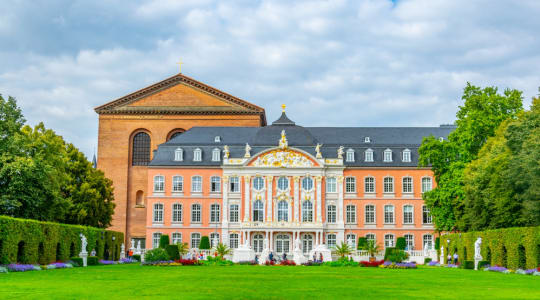
The Electoral Palace, also known as the Kurfürstliches Palais or Palace of the Prince-Electors, is a Baroque palace located in Trier, Germany. It was built between 1615 and 1748 as the residence of the Prince-Electors of Trier, who were important figures in the Holy Roman Empire.
The palace was designed by several different architects, including Johannes Seiz, Christoph Wamser, and Balthasar Neumann. It features a mix of Baroque and Rococo styles, with an elaborate façade adorned with sculptures and decorative elements. The palace has a central courtyard with a fountain and a grand staircase leading to the upper floors.
Today, the palace is home to the Rheinisches Landesmuseum Trier, a museum that displays artifacts from the history of the region. Visitors can explore the palace's opulent halls and rooms, including the Mirror Hall, the Elector's Apartment, and the Baroque Chapel. The museum's collections include Roman antiquities, medieval art and artifacts, and works from the Baroque and Rococo periods.
The Electoral Palace is considered one of the finest examples of Baroque architecture in Germany and is a popular tourist attraction in Trier.
Explore Near Electoral Palace Trier
Discover 5 attractions, 3 cities, and 3 airports within 75km. Perfect for planning day trips, finding connecting flights, or discovering new destinations to explore during your visit.
Nearby Attractions & Places to Visit
5 destinations within 342m - 37.6km from your location





Nearby Cities Worth Exploring
3 destinations within 421m - 63.6km from your location
Airports Near Electoral Palace Trier
3 destinations within 34.7km - 68.7km from your location
Cross-Border Adventures Near Electoral Palace Trier
Discover cross-border adventures near Electoral Palace Trier. Explore neighboring countries with similar attractions and extend your travel experience across borders.








And 1 more neighboring countries